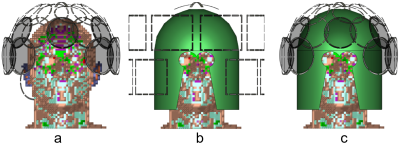Bei Zhang1, Gregor Adriany2, Navid Pourramzan Gandji3, Qing X. Yang3, Brian Rutt4, Jeramie Radder2, Lance DelaBarre2, Myung Kyun Woo2, Kamil Ugurbil2, and Riccardo Lattanzi5,6
1Advanced Imaging Research Center, UT Southwestern Medical Center, Dallas, TX, United States, 2Center for Magnetic Resonance Research, Department of Radiology, University of Minnesota, Minneapolis, MN, United States, 3Department of Radiology, Pennsylvania State College of Medicine, Hershey, PA, United States, 4Department of Radiology, Stanford University, Stanford, CA, United States, 5Center for Advanced Imaging Innovation and Research (CAI2R) and Bernard and Irene Schwartz Center for Biomedical Imaging, Department of Radiology, New York University School of Medicine, New York, NY, United States, 6The Vilcek Institute at NYU Langone Health, New York, NY, United States
1Advanced Imaging Research Center, UT Southwestern Medical Center, Dallas, TX, United States, 2Center for Magnetic Resonance Research, Department of Radiology, University of Minnesota, Minneapolis, MN, United States, 3Department of Radiology, Pennsylvania State College of Medicine, Hershey, PA, United States, 4Department of Radiology, Stanford University, Stanford, CA, United States, 5Center for Advanced Imaging Innovation and Research (CAI2R) and Bernard and Irene Schwartz Center for Biomedical Imaging, Department of Radiology, New York University School of Medicine, New York, NY, United States, 6The Vilcek Institute at NYU Langone Health, New York, NY, United States
The additional complexity associated with constructing a multi-element transceiver array compared to using an external transmitter could be justified for 10.5T imaging by the expected gain in performance.

Figure 1 Different transmit
setups. 32-ch receive array with
the 16 elements chosen as transceivers shadowed (a); external 16-ch transmit
array with high-permittivity helmet (b); 32-ch receive array with HPM with the
16 elements chosen as transceivers shadowed (c). Note that in (b) the 32-ch
array between the external transmit array and the HPM helmet is not shown for
clarity. Simulations were repeated also for the transmit setup in (b) after
removing the HPM helmet.
